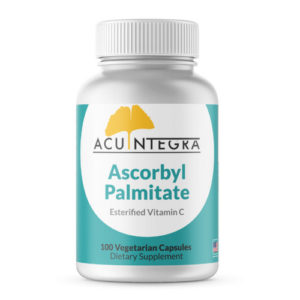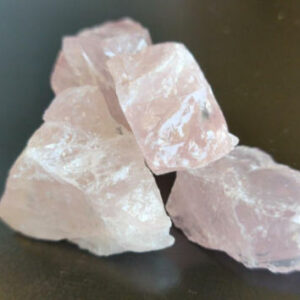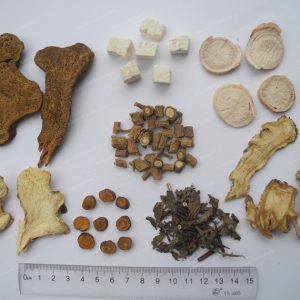
Fast Mimicking Diet: What it is, why to try it (or not) & how to sign up!
A few months ago I read The Longevity Diet by Dr. Valter Longo—I highly recommend this book to anyone wanting to learn a way of eating that is well-balanced and linked to a higher degree of health and longevity. I was intrigued by his findings regarding how a low-calorie, vegan diet could mimic the benefit of fasting without muscle-wasting and other negative side effects of a prolonged fast. Over the last 20 years, he has been studying how to use food to promote healing and developed a product line to make it easy to add the Fast Mimicking Diet to a 5-day protocol for the benefits of metabolic reset and stimulating autophagy (cellular clean-up) and cellular rejuvenation.
Several things impress me about his company, L-Nutra:
More information on this can be found on the Prolon Site: https://prolonlife.com/pages/the-science
Here’s what I learned from my test of the 5-day fast!
For this test, my husband Charlie agreed to do the program with me. This was important to me because he is a picky eater and his evaluation of taste and texture would help me rate suitability for a broad range of patients. It was also important because he’s never done any fasting before. I wanted to see how he handled the calorie-restricted diet as well.
Today as I’m writing this is Day 5, I will add to this around Day 7 to capture afterthoughts and later observations but here are some initial results.
Day 5:
I have done calorie restrictions and lighter fasting before. While I did feel hungry here and there, throughout the 5 days—by snacking consistently on the items in my box throughout the day I was never starving, lightheaded or woozy! Day 4 and 5 I did experience some headaches and body aches but they were all localized around the areas of past injuries—I’m assuming this is part of the repair process. None of it was bad enough to make me think about taking something, it was more like a dull ache than pain. The texture and flavors of the items are ok—it’s freeze-dried soups, bars, and crackers. The crackers and olives were my favorite! There are a couple of chocolate-covered rice crisps throughout the 5 days to give a little sweet something.
Charlie was hungry a lot throughout the 5 days—a couple of times he had to add some extra food (a small amount of nuts or a bite or two of cottage cheese). This may have added to the sense of being hungry but he didn’t give up and got through it.
We both limited our physical activity and chose a time when we could rest if we felt like we needed it during the 5 days. I wouldn’t have done a workout but my energy was fine through the 5 days. Charlie definitely slept more but it’s unclear if that was due to napping to avoid feeling hungry or because he was that tired from the process.
The next few days post fast will be telling. I do know I appreciate that I am back to the weight I feel best at. I feel a blossoming of energy and want to work out!
As recommended, we would repeat this process 1x per month for 3 months and then go to 2-3x per year for maintenance. Time will tell if Charlie will do this with me again next month.
Now—who should not do this?
Day 7 update:
I’ve been noticing more muscle soreness after increasing my workout intensity over the last couple of years. I added in a pretty tough workout to see if the fast changed this. I can tell my metabolism is working more efficiently—I’ve actually dropped another pound even though I’m eating my normal amount and another ¼” off my waist measurement. Charlie noticed his clothes fit better—and he’s said he’s willing to do this all again next month as we follow the initial 1x per month for 3 months as recommended by Dr. Longo.
Order your kit HERE (external site)
If you are diabetic, pre-diabetic, or are under treatment by an MD for any condition please contact the office for a FREE CONSULT to determine if this program is right for you.
Summer Healing Herbs: Lily Bulb & Artemisia Tea

It’s tempting to reach for a cold glass of water or sweet tea in this hot weather, but those ice-cold drinks may not be the best way to stay fit and hydrated! In many ruggedly hot climates, the tradition is to drink hot teas that are lightly sweetened to help stay cool. How does that work?
There is some evidence that drinking a warm beverage increases evaporative heat loss potential and, therefore, reduces body heat storage in dry environments that allow for sweat evaporation. The keywords here are dry environments. Think: desert conditions—so when it’s hot and dry that hot drink will help you cool off more. In hot and humid climates the humidity prevents the sweat from evaporating so the benefit of the hot drink won’t be as great unless there is a breeze helping to increase the evaporation or sweat.
As Tolkien wrote in The Lord of the Rings, “Pay heed to the tales of old wives. It may well be that they alone keep in memory what it was once needful for the wise to know.” Oral tradition should not be dismissed out of hand, simply because it initially strikes us as absurd.
In the heavy humid heat of a Kentucky summer, I enjoy this recipe from southern China—this herbal tea made of lily bulbs and artemisia helps improve circulation, drain excess dampness, support the lungs, and boost immune function. It can be enjoyed hot or cool but preferably not iced (and a little honey or stevia is fine). Given that our weather is sometimes humid and sometimes dry, let the weather determine your drink temperature for optimal cooling.
Other teas to help beat the heat include: hibiscus, mint, chrysanthemum, and tangerine peel—either alone or served in pairings.
Plastic-Free July

This article was sent to me by my brother. It is eye-opening and has a shockingly bad prognosis for the future of our planet if we don’t start thinking about ways to reduce our reliance on plastic and look hard at the reality of the hidden costs of recycling:
Quillette Article: Recycling Plastic Is a Dangerous Waste of Time
Change doesn’t happen overnight and it doesn’t happen because the government mandates it. It happens because people change things with how they spend their money. We’ve seen this in the incorporation of stevia and other healthier sweeteners in food, a broader selection of gluten-free options, etc. It also happens because each person does what they can to promote that change. Here are some little ways we at Raja Wellness will be working to reduce plastics:
In my private life here are some things I do to reduce my plastic use:
There are many ways we can make changes for the better—while supporting local farmers and artisans, and choosing natural and organic options!



